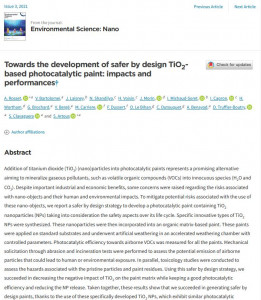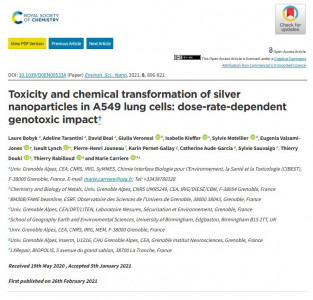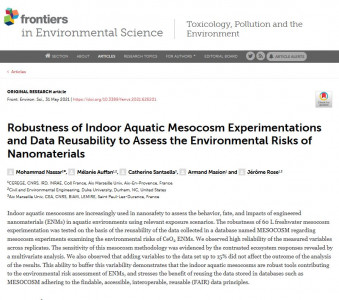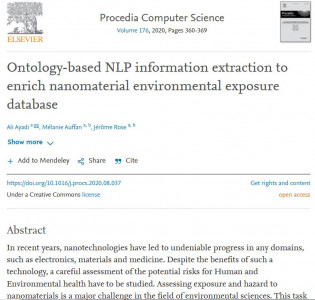Dr. Blanche Collin, a postdoctoral researcher at University of Kentucky (UK), Dr. Jason Unrine and Dr. Olga Tsyusko, CEINT faculty members at UK, and a UK masters student Emily Oostveen have recently published a paper in Environmental Science and Technology.
The study investigated the role of CeO2 nanoparticle (NP) surface charge and the presence of natural organic matter (NOM) in determining bioaccumulation and toxicity to the model soil organism Caenorhabditis elegans.
Method
Dextran coated CeO2-NPs were synthesized : DEX-CeO2(0). Then, these coatings were functionalized using diethylaminoethyl groups to confer either a net positive charge - diethylaminoethyl dextran DEAE-CeO2(+), or carboxymethyl groups to confer a net negative charge - carboxymethyl dextran CM-CeO2(−).
C. elegans were exposed to several ranges of concentrations for each of these CeO2-NPs. All exposures for every concentration tested were conducted with and without humic acid (HA) -at the concentration of 7 mg.L–1.
Results
The positively charged CeO2-NPs were found significantly more toxic to C. elegans and bioaccumulated to a greater extent than the neutral and negatively charged CeO2-NPs.
Greater reduction proportion of Ce from Ce (IV) to Ce (III) was found in C. elegans, when exposed to the neutral and negatively charged relative to positively charged CeO2-NPs. Nevertheless, the adsorption and/or internalization of CeO2-NPs in C. elegans affected the redox state of CeO2-NPs, regardless of surface charge.
Last point, but not least : HA decreases the toxicity of CeO2-NPs, and its concentration was shown to influence negatively Ce bioaccumulation : higher ratio of HA to NPs, which is a more relevant scenario in the environment, would decrease Ce bioaccumulation.
This work suggests that although initial surface chemistry had a profound impact on toxicity, environmental transformations (specifically coating with natural organic matter) reduced the effects of initial surface chemistry.
This work was supported by the U.S. EPA through a STAR grant (RD-83485701-0) and CEINT.
Blanche Collin defended her thesis at CEREGE (Aix-en-Provence, France) in 2011, as a PhD student and worked with several members of Labex Serenade.









